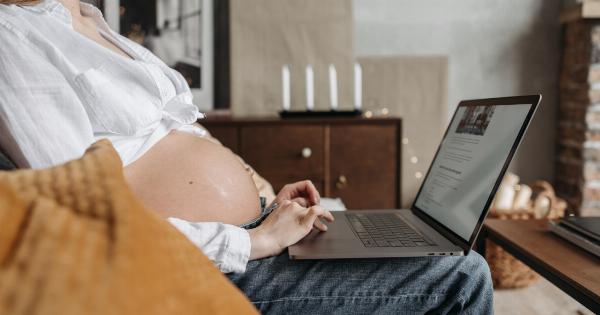During pregnancy, the body undergoes many changes. The growing belly can cause discomfort, lower back pain, and fatigue. Standing for prolonged periods can worsen these symptoms.
Therefore, it is essential to learn the correct way to stand when pregnant, as it can help alleviate discomfort and prevent future issues. Here are some tips on how to stand correctly when pregnant:.
1. Keep your weight evenly distributed
When standing, ensure that your weight is evenly distributed between both feet. This will help avoid putting excess pressure on one side of the body, leading to discomfort and back pain.
Stand with your feet shoulder-width apart and distribute your weight evenly from your feet to your thighs and up to your spine.
2. Don’t lock your knees
Locking your knees can cause pain and dizziness, especially during pregnancy. When standing, ensure that your knees are slightly bent. This will reduce the pressure on your knees and allow blood to flow freely through your legs.
3. Maintain good posture
Poor posture can put extra strain on your back and increase discomfort. When standing, ensure that your shoulders are relaxed and pulled back slightly. Keep your head straight, and your chin parallel to the ground.
It will also help to engage your core muscles to support the lower back.
4. Avoid wearing high heels
High heels can cause unnecessary pressure on your feet, ankles, and knees and increase the risk of falling. During pregnancy, it is best to avoid wearing high heels for extended periods. Instead, opt for comfortable shoes with good arch support.
This will provide better stability and keep your feet and legs comfortable.
5. Take breaks
Standing for too long can cause fatigue and discomfort. Therefore, it is essential to take breaks and rest whenever possible.
If you need to stand for prolonged periods, try shifting your weight from one leg to another or taking short walks to improve blood flow.
6. Use props for support
Using props such as a footstool or cushion can help take pressure off the legs and lower back when standing for long periods.
A footstool can help elevate the feet and improve blood circulation, while a cushion can help support the back and reduce discomfort.
7. Exercise regularly
Regular exercise during pregnancy can help improve posture, reduce swelling, and increase overall comfort. Exercise can also help reduce the risk of complications during childbirth.
However, it is essential to speak to your doctor before starting any exercise program during pregnancy. Low-impact activities such as walking, prenatal yoga or swimming are often suitable.
8. Get enough sleep
Getting enough sleep is essential during pregnancy to help the body cope with the physical changes. Lack of sleep can increase stress levels and worsen discomfort.
Try to get at least eight hours of sleep each night and take short naps during the day to boost energy levels.
9. Apply heat or cold to the affected areas
If you experience swelling or pain in your legs or back, applying heat or cold therapy can help alleviate discomfort. Heat therapy can help improve blood circulation, reduce muscle tension, and promote relaxation.
Cold therapy can help reduce inflammation and swelling.
10. Seek medical advice if needed
If you experience severe leg or back pain, seek medical advice immediately. These could be signs of a more severe problem that needs urgent attention.
Conclusion
Standing correctly when pregnant is essential to prevent discomfort, back pain, and other issues. It is essential to maintain good posture, distribute your weight evenly, take breaks, and exercise regularly.
Remember to wear comfortable shoes, use props for support, and seek medical advice if needed. Following these tips can help make pregnancy more comfortable and reduce the risk of complications during childbirth.




























